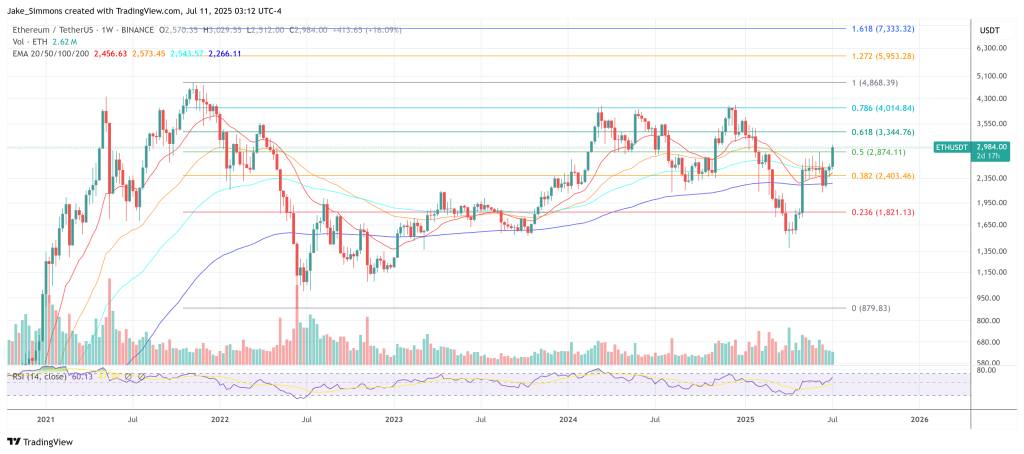The Ethereum Foundation has set a twelve-month clock running on one of the most audacious upgrades in the network’s decade-long history: replacing full block re-execution with real-time verification of succinct zero-knowledge proofs native to Layer 1. “Ethereum is going all in on ZK,” research engineer Sophia Gold declared in a July 10 blog post that sketches the path to an L1 zkEVM capable of handling live main-net traffic without compromising decentralization or security.
Ethereum Goes All-In On ZK
Gold’s plan begins by letting validators opt into so-called “ZK clients.” Instead of replaying transactions, these clients will “statelessly verify” three independent proofs—each produced by a different zkVM mirroring the EVM—to achieve the same defence-in-depth that client diversity provides today. Proof verification is quick enough, and the artefacts compact enough, that downloading several proofs per block is “very reasonable,” she wrote.
For the first release the heavy cryptography can run off-chain, provided the Glamsterdam hard fork introduces pipelining to buy provers a few extra seconds. Once a super-majority of stake is comfortable, gas limits will rise to levels that make proof verification, rather than re-execution, a hardware necessity. Those same proofs can then feed an EXECUTE precompile, opening the door to native zk-rollups.
To prevent bottlenecks, the Foundation proposes a strict “real-time” proving target: ninety-nine percent of main-net blocks must be proved in ten seconds or less—well within the twelve-second slot time minus propagation overhead. Proof systems must hit 128-bit security and stay under 300 KiB without trusted recursive wrappers, though a temporary floor of 100 bits is tolerated during the first months.
A parallel effort focuses on “home proving.” Gold argues that some solo stakers running validators from their living rooms should also be able to generate proofs, providing a final bulwark against censorship. The Foundation therefore caps on-premise capital expenditure at $100,000—just above today’s 32-ETH stake—and limits power draw to 10 kW, a load compatible with residential EV chargers. “More than hardware cost, the most significant constraint for home proving … is energy usage,” she noted.
The announcement lands amid a break-neck zero-knowledge arms race. Last month Succinct’s open-sourced SP1 Hypercube zkVM proved 93 percent of 10,000 live Ethereum blocks in an average 10.3 seconds, edging inside the Foundation’s latency envelope—albeit on a GPU cluster costing roughly $300,000–400,000.
Between now and Devconnect Argentina in mid-November, the Foundation expects zkVM teams to drive those figures down to the point where proofs can be minted on a single rack and verified almost instantly by every validator. Gold framed the competition as a “race to real-time,” one whose finish line will see Ethereum transformed into “by far the largest ZK application in the world.”
Should the roadmap hold, 2026 could open with an Ethereum mainnet where every block, transaction and smart-contract call is vouched for by cryptographic certainty rather than expensive re-execution—a radical shift that promises higher throughput, lower hardware barriers and new on-chain privacy primitives, all without splitting the chain or compromising its core ethos of trustless computation.
At press time, ETH traded at $2,984.
